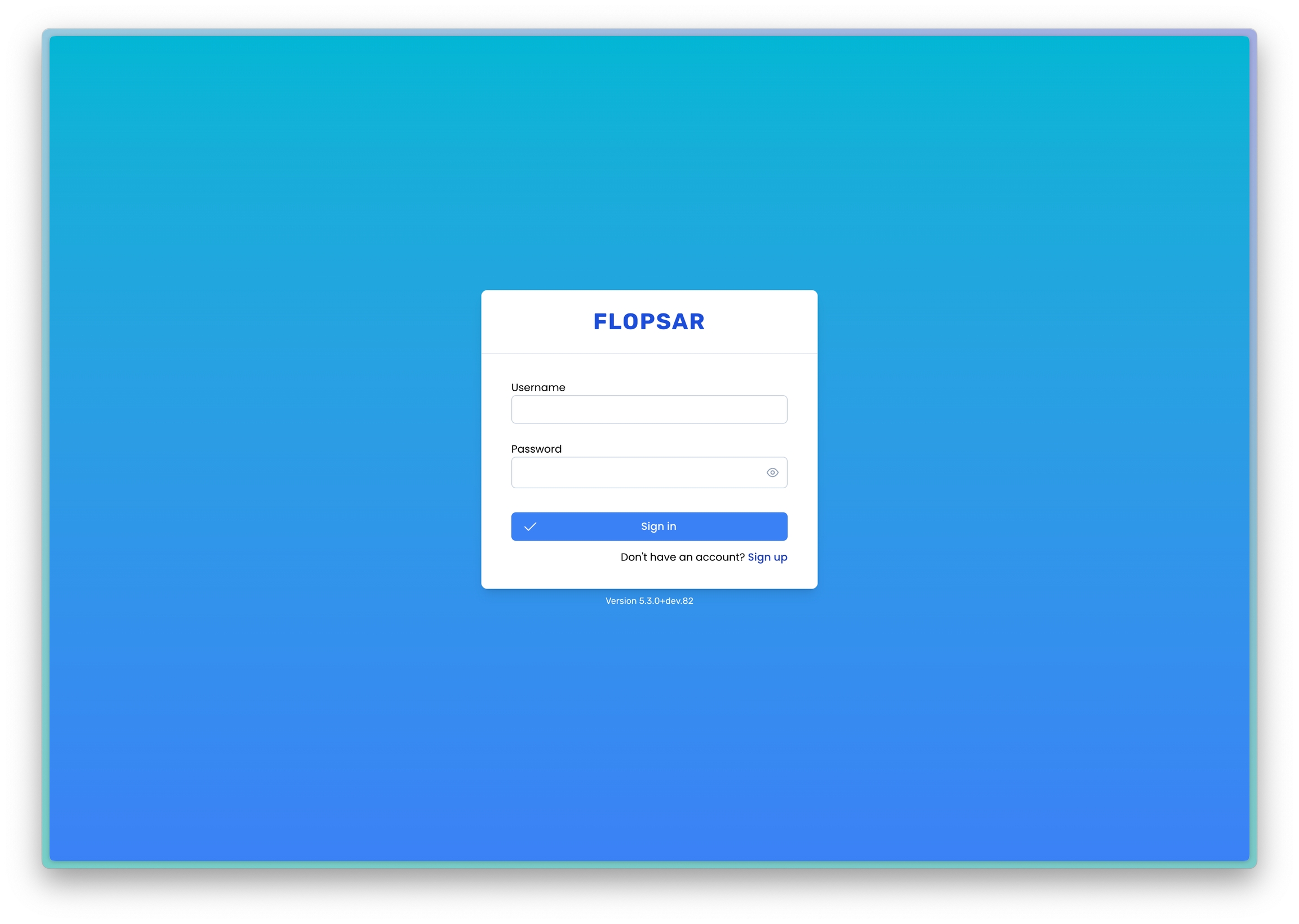Installation
Before you install the software, make sure you meet the following requirements:
you have at least a few GB of storage for the data.
your networking environment does not block TCP connections between components.
The installation procedure covers the server and the agents.
Server
The server binary is distributed as both deb and rpm packages. First of all, you need to download the server installation package for your platform and architecture. If you want to serve the workstation application from the Flopsar server, download flopsar-workstation.zip file too. For Debian based distributions you can install it by executing the following command:
# dpkg -i flopsar-server-<VER>.<arch>.debFor Red Hat based distributions you can install it by executing one of the following commands:
# rpm -ih flopsar-server-<VER>.<arch>.rpm
# zypper install flopsar-server-<VER>.<arch>.rpm
# yum install flopsar-server-<VER>.<arch>.rpmIn both cases, the installation procedure performs the following operations:
installs
flopsar-serverbinarycreates a
flopsaruser, which is used to run the serveradds a
flopsarsystemdservicecreates a global configuration at
/etc/flopsar
Environment Installation
When the server is installed, next you need to create a new Flopsar environment where the data will be stored. You have two options at your disposal, either bundled environment or separated one.
Copy flopsar-workstation.zip to your destination machine. Now, you need to create a new Flopsar environment by executing the following command:
where <server_home> is a path to the location where the server home directory will be created. If the command executes successfully, it will create a new directory at the specified path.
You need to create a new Flopsar environment by executing the following command:
where <server_home> is a path to the location where the server home directory will be created. If the command executes successfully, it will create a new directory at the specified path.
Note, since the workstation application is not served from the Flopsar server in this case, you need to download the flopsar-workstation.zip file and install it on your own web server.
For example, in nginx web server you should add the following location sections to your server configuration:
The example above assumes that the Flopsar server listens to requests on localhost:9443 socket address and the Flopsar server has its ssl.enable configuration option value set to false. Obviously, you should adjust the proxy_pass option to your own needs according to the server configuration.
If you start the server using systemd, note that it will run it as flopsar user by default. Make sure this user has read/write permissions to the environment directory.
Server Configuration
The server stores its configuration globally in /etc/flopsar/settings.yml file. You must edit this file to make at least two changes. The first one is required and you must accept the EULA by setting option eula: true otherwise, you will not be able to run the server. The second one is to set the data option, which points to you environment directory.
Running the Server
Finally, you can start the server by executing the following command:
If you installed the workstation application bundled with the Flopsar Server, then you can access the application at the address specified at the server configuration. If you installed the workstation application outside the Flopsar server, you can access it at the address specified in your web server configuration. In either case, you should be able to access the workstation application login page at the address: https://<YOUR_IP>:9443

Docker Image
Alternatively, you can use a Docker image which has preinstalled the server along with the workstation. All you need to do is pull the image.
Quick start
Next, run the server by executing the following command:
or if you use podman:
External storage
Alternatively, if you want to store the Flopsar data outside the container execute the following command:
Quick Sample Installation
This section presents a sample, quick installation of the Flopsar server. First download the installation package along with the workstation application. Next, execute the following command:
or if you use rpm package:
Next, let's create a new Flopsar environment at /opt directory:
If the environment has been created successfully, the following output should be displayed:
Next, change the ownership of the environment directory to flopsar user:
Next, open the /etc/flopsar/settings.yml file:
and make changes in both eula and data options (line 1 and 3):
And finally, start the server:
Now, you should be able to access the workstation application at https://localhost:9443
Agent
To install the Flopsar agent, follow carefully the instructions below:
select the agent library file for your platform and architecture.
copy the agent library to your server machine.
configure the agent.
restart your application.
OpenTelemetry Agents
To install OpenTelemetry agents, please refer to OpenTelemetry documentation and the server section.
Last updated